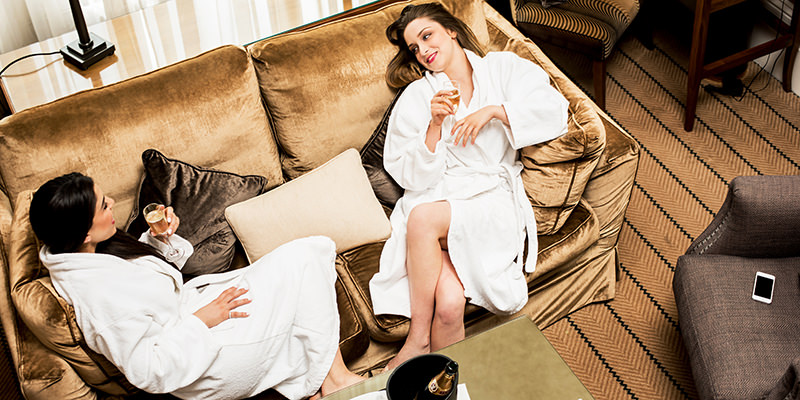It’s Monday. The start of the work week. The day Garfield the cat eats himself into a lasagna-induced coma (monitored carefully by Odie). Why, for god’s sake, can’t we have some Champagne?
Because, and here’s the real travesty, Champagne—the alcoholic beverage that (arguably) imparts the most giddy kind of intoxication—has been relegated to special (as in, already sufficiently giddy) occasions for over three centuries. Champagne, or the secondary fermentation process required to make it, was supposedly developed in the late 17th century—tradition says by Benedictine Monk Dom Perignon in 1697, though French winemakers in Limoux had already been producing sparkling wines for over 160 years by that point. (Fun fact: the bubbles were originally thought of as a fault, and Perignon at first called Champagne “the devil’s wine.”)
We learned better (those bubbles are heaven-sent), and over the course of the 18th Century, French royalty basically Bogarted the stuff for their harpsichord dance parties, or whatever it is they did back then. And ever since, Champagne’s been a culturally “celebratory” beverage. Not without reason, we have to admit: the drama of opening a bottle (with or without saber), the “cup-runneth-over” visual of bubbly flowing down the sides of said bottle (technically, if you’re interested in drinking most of the Champagne, you’ll want to avoid that), the thrill of the bubbles themselves (it may seem silly, but effervescence is an incredibly unique and stimulating palate experience; and yes, since we were kids, we’ve all known: bubbles=magical).
While we respect the aristocratic-fanciness origins of “occasion” Champagne, we’re just about done with all that. These are tough times, with havoc variously administered across the globe by a variety of self-elected civilization-party-crashers, and a few unstoppable reality television stars. We want—nay, the people demand—the chance to consume Champagne casually. The liquid joy buoyancy of Champagne shouldn’t be confined to boat christenings or weirdly depressing Oasis supernovae. Champagne should happen whenever bubbly is sorely in need (and isn’t it more in need on, say, a dull Tuesday than at New Year’s Eve, when there’s already enough glitter to make the whole world seem magical?)
Fortunately, it looks like the industry is responding. Unfortunately, the response, so far, comes in cans. Sofia Minis, the pink-canned, generally middling offering from the Francis Ford Coppola winery, is the first radically casual Champagne sparkling wine we’ve seen. And while the complexity of flavor leaves something to be desired (the wine is 70% Pinot Blanc, 15% Riesling, and 15% Muscat), the fact that it comes in cans is a bold, and praise-worthy, step. We might prefer Sofia’s work in say, The Virgin Suicides, but her eponymous sparkling wine is at least a step in the right direction.
About that strikethrough’d text above: Champagne is a protected DOC, meaning anything produced outside of the region, no matter how complex in flavor or pearlescent in bubble, cannot be called Champagne (unless it’s made in California, and only then by a handful of wineries who have a special exception). Sofia is actually a sparkling wine, and we’re fine with either—Champagne or sparkling wine—as long as we don’t have to wait for a baby to be born or a friend to be hired or (sigh) a wedding toast to end to drink the stuff.
We just hope more casual quality sparkling wines hit the market sooner rather than later. To quote Bette Davis (as Kit Marlowe), “there comes a time in every woman’s life when the only thing that helps is a glass of Champagne.”

